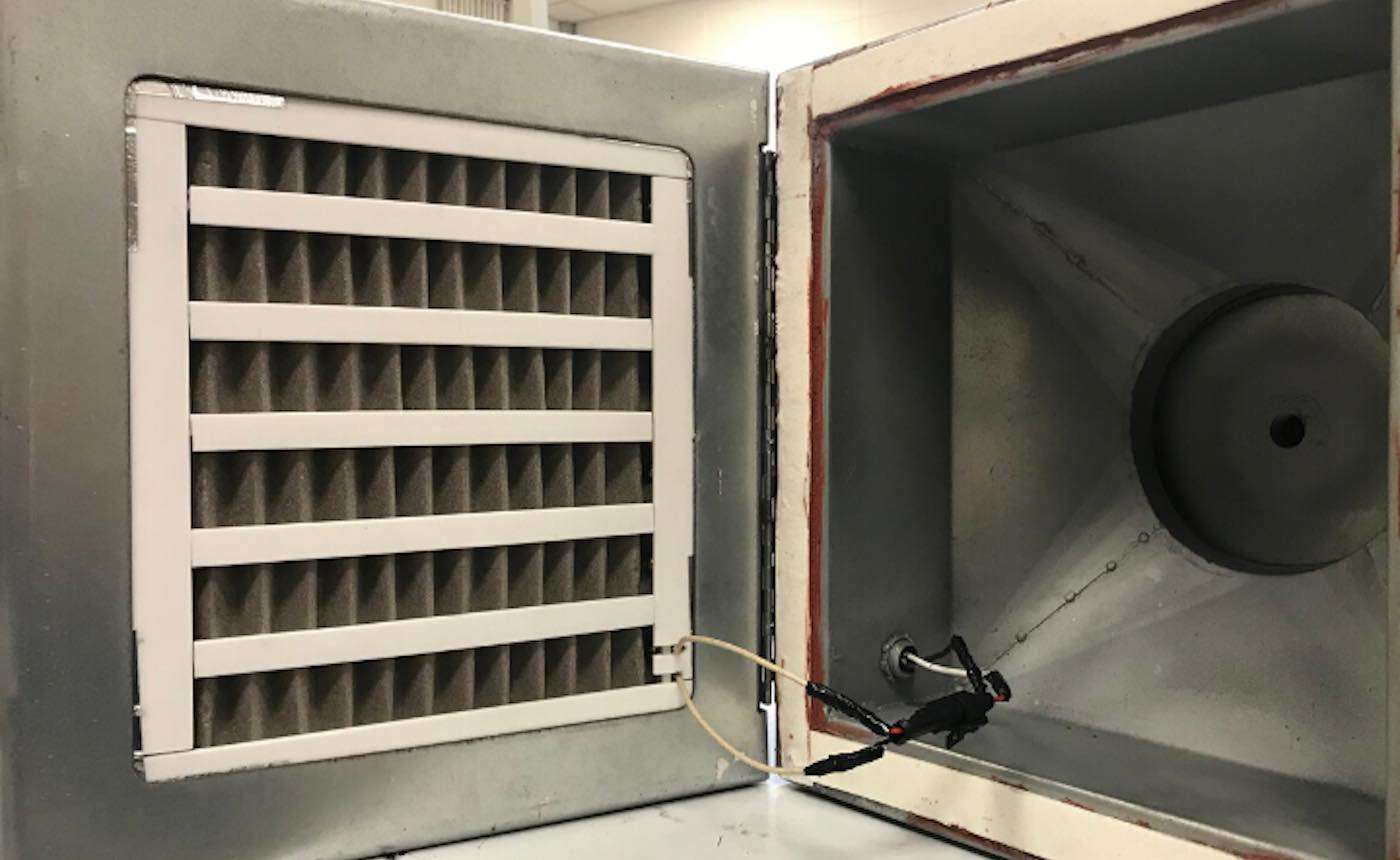Scientists Generate Electrical Field That Can Help Repair Fractured Bones
Scientists have created a natural polymer device to heal broken bones that mimics the natural electric field of our body to stimulate bone growth.

Researchers from the University of Houston have succeeded in collaboration to develop a "catch-and-kill" air filter that can trap COVID-19—and instantly kill it in the process.
The researchers reported that tests at the Galveston National Laboratory found 99.8% of the novel SARS-CoV-2 virus was killed in a single pass through a filter made from commercially available nickel foam heated to 200 degrees Centigrade—or about 392 degrees Fahrenheit. It also killed 99.9% of the anthrax spores during tests at the national lab.
"This filter could be useful in airports and in airplanes, in office buildings, schools and cruise ships to stop the spread of COVID-19," said Ren, co-author of the paper. "Its ability to help control the spread of the virus could be very useful for society."
The filter, which was described in a paper published this week in Materials Today Physics, was designed with the help of Zhifeng Ren, director of the university's Texas Center for Superconductivity (TcSUH), and Monzer Hourani, CEO of Houston-based medical real estate development firm Medistar.
Medistar executives are also proposing a desktop model of the filter capable of purifying the air in an office worker's immediate surroundings, he said.
Ren said Medistar first approached TcSUH for help in developing the concept of a virus-trapping air filter on March 31st, just as the pandemic was spreading throughout the United States.
Since the researchers knew the virus could remain in the air for about three hours, the filter seemed to be a viable plan—and with businesses reopening, controlling the spread in air conditioned spaces was urgent.
Medistar also knew the virus couldn't survive temperatures above 70 degrees Centigrade, (158 degrees Fahrenheit), so the researchers decided to use a heated filter. By upping the filter temperature to about 200º C, they were able to kill the virus almost instantly.
Ren suggested using nickel foam for the device because it met several key requirements: the flexible material is porous enough to allow the flow of air while also being electrically conductive, which allows it to be heated.
Since nickel foam has low resistivity, however, it's difficult to raise its temperature high enough to quickly kill the virus. The researchers solved that problem by folding the foam, connecting multiple compartments with electrical wires to increase the resistance high enough to raise the temperature as high as 250 degrees C.
By making the filter electrically heated—rather than heating it from an external source—the researchers say they minimized the amount of heat that escaped from the filter, allowing air conditioning to function with minimal strain.
A prototype was built by a local workshop and first tested at Ren's lab for the relationship between voltage/current and temperature; it then went to the Galveston lab to be tested for its ability to kill the virus. Ren said it satisfies the requirements for conventional heating, ventilation and air conditioning (HVAC) systems.
"This novel biodefense indoor air protection technology offers the first-in-line prevention against environmentally mediated transmission of airborne SARS-CoV-2 and will be on the forefront of technologies available to combat the current pandemic and any future airborne biothreats in indoor environments," said study co-author Dr. Faisal Cheema from the UH College of Medicine.
The researchers are now calling for a phased roll-out of the device, "beginning with high-priority venues, where essential workers are at elevated risk of exposure (particularly schools, hospitals and health care facilities, as well as public transit environs such as airplanes)."
Need more positive stories and updates coming out of the COVID-19 challenge? For more uplifting coverage, click here.
Reprinted from the University of Houston
Protect Your Friends From Negativity By Sharing This Exciting Story To Social Media…
Be the first to comment